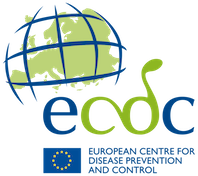Widespread avian influenza in birds increases risk of human exposure
This autumn has seen an unprecedented surge in detections of highly pathogenic avian influenza A(H5N1) virus in wild birds, accompanied by many recent outbreaks in domestic poultry across affected areas of the EU/EEA.
This autumn has seen an unprecedented surge in detections of highly pathogenic avian influenza A(H5N1) virus in wild birds, accompanied by many recent outbreaks in domestic poultry across affected areas of the European Union/European Economic Area, as reported by the European Food Safety Authority (EFSA). The high circulation of avian influenza virus in bird populations raises the risk of human exposure to infected animals.
Awareness of the risk of infection from animals, and the importance of appropriate preventive measures, should be strengthened among everyone who may be exposed to potentially infected animals through their work or through other activities, including those in contact with wild birds, such as hunters.
People exposed to animals infected with avian influenza virus should be monitored for 10 to 14 days after their most recent exposure and, if they develop symptoms, they should self-isolate and be tested immediately.
During the influenza season, healthcare workers, including primary care workers, should be made aware of the epidemiological situation in animal populations in the region. In areas with ongoing avian influenza outbreaks in animals, healthcare workers should ask patients about their history of exposure to animals, particularly in those with symptoms compatible with animal-to-human influenza infection.
ECDC and EFSA publish quarterly avian influenza reports, which provide an epidemiological overview of the avian influenza situation in animals and humans, and include an ECDC risk assessment.
To support EU/EEA countries, ECDC has also published several recent guidance documents related to avian influenza surveillance, investigation and response measures, including enhanced surveillance and targeted testing in humans:
- ECDC guidance for surveillance and targeted testing for the early detection of zoonotic influenza in humans during the winter period: This document gives recommendations to EU/EEA countries on testing, typing and subtyping to identify animal-to-human influenza virus infections in humans during influenza season in the EU/EEA.
- Investigation protocol of human cases of avian influenza virus infections in EU/EEA: This protocol sets out measures for the follow-up and management of people exposed to infected animals and human cases of avian influenza, and for the public health management of possible and confirmed human cases.
- ECDC/EFSA Coordinated One Health investigation and management of outbreaks in humans and animals caused by zoonotic avian influenza viruses: This report focuses on outbreak investigation and management of avian influenza virus at the human animal-environment interface, emphasising key actions for the stakeholders involved.
- ECDC/EFSA Scientific Opinion on Preparedness, prevention and control related to zoonotic avian influenza: This report provides a list of One Health actions to strengthen surveillance, including a list of mutations considered important to monitor, to reduce the risk of spill-over events to humans and the spread of avian influenza.







